#Term
Text
Aloof
When sailing close to a lee shore (that is, with the wind blowing onto it), the helmsman might be instructed to hold the ship "a-luff" - that is, close to the wind - to prevent it crashing onto the rocks. To be " a-luff" , or aloof, therefore came to mean keeping your distance.
99 notes
·
View notes
Text


SPINPERSPESQUE
A perspesque term for wanting one’s special interests to be intwined in how others perceive them. For autistic people only.
#spinperspesque#perspesque#perspesque coining#perspesque flag#perspesque term#flag#mogai#coining#mogai flag#mogai coining#mogai term#term
99 notes
·
View notes
Text

Systecor (system protector)
A protector that protects not only their own system but other systems too. This can be physically, verbally or emotionally, ect.
((term made by us. Flag made by us))
#did#actually did#anti endo#did system#alter terms#endos dni#system#system terms#endos fuck off#alter#Alter role#System roles#Role#Term#Protector#protector alter
101 notes
·
View notes
Text
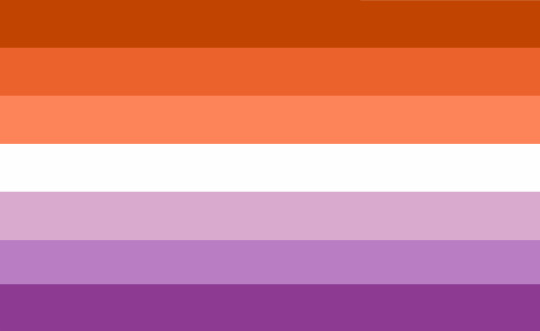
[Image ID: The Chemme flag created by coiner Gent of Gender-Jargon, 2024. The flag consists of seven horizontal stripes of the same size. From top to bottom, the horizontal stripes are burnt orange, orange, coral, white, lilac, light purple and purple. /.End ID]
Chemme: a combined Butch-Femme identity.
[PT: Chemme: a combined Butch-Femme identity. /.End PT]
When referring to gender, Chemmegender may be used.
Etymology
From English, "Ch" from "Butch" + "-emme" from "Femme". Coined by Gent of Gender-Jargon, 2024.
Elaboration
Chemme describes any individual who is both Butch and Femme. Chemme is similar to Butchfemme, but specifies Chemme as being distinct from Futch. In this context, Futch is conceptualized as a being between Butch and Femme. Whereas Chemme is a term to describe a coupled Butch-Femme experience. This experience can be (in)distinct, simultaneous, fluid, fluctuating, (un)equal, partial, etc.
Like Butch, Femme, Futch, etc., Chemme can be a queer subcultural identity or a gender identity specifically. When specifying a Chemme gender identity, Chemmegender can be used. Chemmegender describes an individual with a Butchgender-Femmegender bigender.
Flag
The Chemme flag was created using two common Butch and Femme flags, created by tumblr user Butchspace and tumblr user Noodle, respectively with slight color adjustment. The topmost three stripes are taken from the aforementioned Butch flag. The middle stripe is white, like it is in both the Butch and Femme flags. The bottom three stripes are taken from the Femme flag. From top to bottom, the Chemme flag is burnt orange, orange, coral, white, lilac, light purple and dark purple. The stripes have the following meanings:
The burnt orange, orange and coral stripes represent Butch identity.
The white stripe represents Multigender experience.
The lilac, light purple and dark purple stripes represent Femme identity.
Flag by Gent of Gender-Jargon, 2024.
#chemme#chemmegender#butchfemme#butch#femme#futch#poingender#quin#quingender#term#pride flag#mogai#mogaireal#mogai safe#mogai positive#pro mogai#mogai term#mogai coining#gender coining#liom#actually mogai#mogai friendly#buin#buingender#femingender#femin#microlabel#trans#transgender#nonbinary
78 notes
·
View notes
Text
The kanji “kei” (系) and its usage
As I still keep seeing it being used in instances where it doesn’t make sense, I thought it would be a good idea to talk a little about the kanji’s actual use within the japanese language.
系 is commonly used as a suffix to categorize and describe various things by their “type”, therefore can also be translated as such. For example, your nationality would be “country+kei+person”, stating the color of something “color+kei+object”, describing a song “genre+kei+music”, and specifying the style of your outfit “style+kei+coord”. However, in the overseas jfashion community there still persists the misunderstanding that it means “style” or “fashion”.
So where does this misunderstanding come from?
The very first instance of “kei” being used in a fashion context overseas was “visual kei” (ヴィジュアル系). During the late 90s, western media outlets discovered the genre and introduced it as unique fashion style from Japan heavily tied to music while also translating its name as “visual style”. This was the beginning of the whole misunderstanding as visual kei is only used to label a band as “visual-type”, meaning there is a heavy focus on a visual aspect. This is also why you will have a hard time shopping for the so-called visual kei fashion because it doesn’t really exist, and what is considered that overseas usually falls under the japanese goth punk (ゴスパンク) style that bangya wear.
After this, many years passed and “fairy kei” (フェアリー系) appeared within the jfashion online sphere, strenghtening the overseas conclusion that “kei” must mean “style” and therefore refers to fashions. While fairy kei is indeed used as a name for this specific 80s-inspired pastel fashion, it’s a lot more common to see it being refered to as just “fairy fashion” in japanese because “fairy-type” is also used to describe plenty of unrelated things. Meanwhile calling it fairy fashion would have been useless overseas for a similar reason and it made a lot more sense to use “fairy kei” instead.
From that point on, the international jfashion community would coin one “kei fashion” after another regardless of the styles actually being known by those names within Japan. Searching the majority of them in their japanese spelling would result in a dead end with many not even making any sense in relation to fashion, such as “mori kei” literally referring to forest types and “pop kei” to anything that’s popular at the moment.
Basically, the lesson of this post is that there is no need to include “kei” in the names of japanese fashion styles unless they are unrecognisable without it, because you are not writting in japanese using the kanji to categorize something by its style. In context of the fashion featured on this blog, it is used to differentiate the overall style genre from the english adjective that is “girly”, but not for its substyles as their names are distinct on their own.
I hope this little language lesson was useful to my readers, and if you have any requests for other jfashion-related terms to introduce or explain - just hit me up in my inbox!
#系#kei#semi-related#japanese#jfashion#term#japanese language#japanese lesson#kei fashion#information
220 notes
·
View notes
Text
#animeomelette poll#poll#semantics#language#linguistics#terminology#etymology#out in the sticks#remote place#word#words#phrase#phrases#expression#expressions#term#terms#saying#sayings#interpretation#out in the styx#sticks#styx
30 notes
·
View notes
Note
I've been wondering, do people not use the term "headmate" anymore, and if so, why? I used to see it go by all the time in system related posts and now that I've been realizing might be part of a system myself (still learning the terminology though) I think it might describe like. The other parts of me better than "alters" but if it's a problematic term I don't want to use it? I'm still very new to all this and I've been nervous to look into it because I've been in denial about it for a long time. If you can't answer that's OK! I'm able to do my own research too, it's just something I realized when I noticed I never see the term anymore it seems.

Hello, thank you for the ask!
Many people still use the terms "headmate" - but I do agree with you, it is rarer nowadays to see people using "headmate" as a catch-all. Nowadays, I think the common catch-all is "system member". It does not mean the word "headmate" has become offensive - it just means the plural internet users we see prefer other terms nowadays. I think it's a linguistic shift akin to English-speaking people using "genderqueer" as an umbrella term in the 1990s and 2000s, and "nonbinary" in 2010s and 2020s.
This is anecdotal, but I remember, just a few years ago, it was seen as more polite to use "headmate" as a catch-all in plural communities. Why? Because "headmate" is considered more neutral than "alter/part" (which have medical connotations) or "soulbond" (which have spiritual connotations). The use of "headmate" is not a jab against people who are more medical or spiritual, but it is usually preferred in large spaces where we can't know who uses which terms. It's like people using "they/them" as a default in queer/LGBTQIA+ spaces - it's polite, but of course, not every person prefer it individually.
(also, the medical and spiritual are not necessarily separate for many plurals)
Neither of the above terms is "problematic" - the only time it's problematic is if you use a term for someone, when they already said they don't want it used on them.
It all comes down to personal preference - what feels right to you (all).
Any plural is allowed to have label preferences. Some collectives can prefer "plural", some "multiple", some "system", others "collective", others prefer a combination (like "plural system"), and more. Same as individuals. Some prefer "system member", others prefer "part", some prefer "soulbond", others use more than one for themselves. Some prefer being called "you", others "you&" or "you+", etc.
(For example, I myself prefer "system member", "headmate", and "walk-in".)
So yes, you are allowed to prefer the term "headmate" over "alter". Anyone is.
If you want some plural resources that are inclusive of all more-than-one experiences, morethanone.info and healthymultiplicity.com are good places to start.
Best of luck and take care of yourself/yourselves in your discovery ❤️
Mod Vintage 🪞(DH)
#pluralgang#plurality#plural terms#plural labels#ask#anonymous#mod vintage#dh#🪞#label#labels#term#terms
11 notes
·
View notes
Text

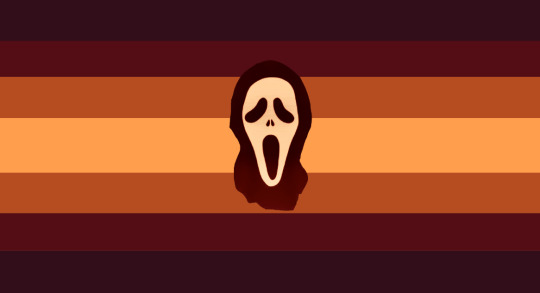
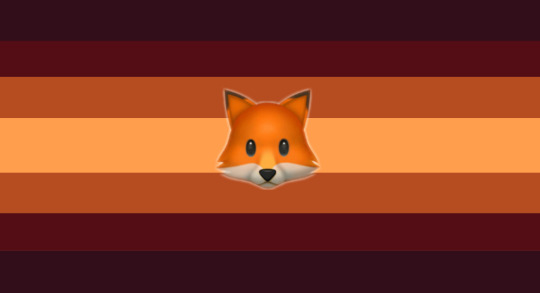

Vulpesghostfaceic !
A gender related to being a fox and ghostface 🦊🔪
Requested by @thunder1408 !!
#hope u like it hehe#i feel like the colors turned out well#also experimenting with different length stripes#ghostface#scream#scream movies#scream franchise#xenogender#mogai#liom#coining#term#flag#fox#foxkin#scream 1996#dead by daylight#dbd#lgbt#gender#lgbtq#my genders#my flags#coined by me#term coining#lgbtqia
14 notes
·
View notes
Text

Remix(queer)
A remix refers to a queer person whose gender presentation may change repeatedly or frequently.
This term can be applied to ANY queer identity! Ex. A remix futch. A remix dyke. A remix enby.
8 notes
·
View notes
Text
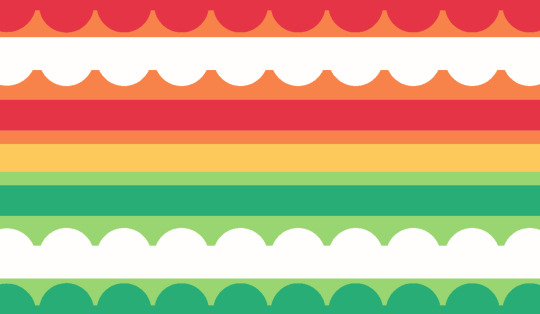
AUTIPET
A gender in the genderpet system related to being an autistic pet, autism and pets, or being autistic with pet-like components. For autistic people only.
#autipet#mogai#coining#xenogender#xenogenders#genders#mogai flag#mogai coining#mogai term#neurogender#xenogender coining#flag#term#xeno coining#autigender
89 notes
·
View notes
Text

dvalen
A dvalen individual has the ability to make other headmates go dormant, as well as pull members from dormancy.
((this term is reclaimed from "pluralpedia". The creator of this term is pro endo. The flag is made by us.))
#anti endo#actually did#did#did system#System#Alter#System terms#Endos DNI#Alter terms#Alter role#Alter roles#Endos fuck off#Plural#Term#Flag#flags
47 notes
·
View notes
Text

[Image ID: the Trinteri pride flag by Gent of Gender-Jargon. The Trinteri flags consists of three down-pointing chevrons of the same size, with negative space above, between and to the left and right bottom corner of the flag. The top negative space is very light green. The left-botton negative space is very light pink. The right-bottom negative space is very light blue. The chevrons from top to bottom are indigo, grey and teal with very very light grey space in between. ./. End ID]
Trinteri: a gender amidst the Gender Trinary; a gender that is centered in the middle of the Male-Female-Neutrois trinary.
[PT: Trinteri: a gender admist the Gender Trinary; a gender that is centered in the middle of the Male-Female-Neutrois trinary. ./. End PT]
Etymology
[PT: Etymology ./. End ID]
From Latin, "Tri-", a prefix meaning "Three" + "Inter" meaning "Between" + "-i", an English neologistic suffix indicating genderness. Literally "between the three". Coined by Gent (Gender-Jargon) (link) in March 2024.
Elaboration
[PT: Elaboration ./. End ID]
Trinteri was created as a result of this post (link) by @your-bigender-big-brother (link). The post posed the question, "what gender quality is right in the center of the trinary?". Most replied, including myself, neutrangity, while others cited epicenity or neutrœmmity, but the more I thought about it, the more I began to feel like these suggested designations were only approximate and didn't quite get to the root of the question.
As Stormy said emself in eir essay (link) ey wrote, the Gender Trinary contains qualities aside from masculinity, femininity and androgyny. Aside from these three, some others are effeminacy, femmulinity, epicenity, neutrommity, neutremmity, neutrœmmity, gynxemity, androxulinity, gyndroxity, neutrangity, tomboyishness and janegirlishness, to name a couple. This got me thinking, which lead me to coin Trinteri as a centrigender that includes the entire Gender Trinary.
Here is the graphic that Stormy included with eir question, which I edited to add Trinteri in the center for reference:
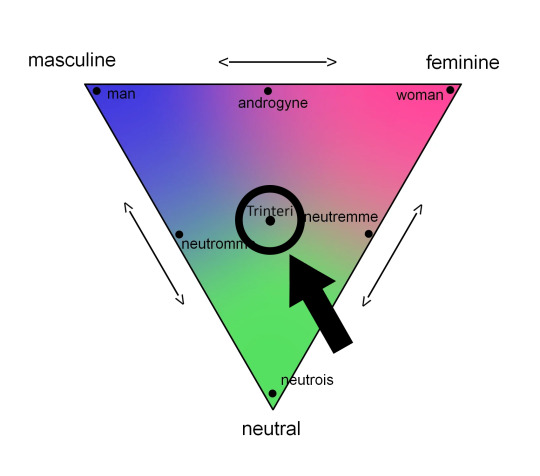
[Image Id: a graphical representation of the Gender Trinary. It is a down-pointing triangle with the left corner labeled "masculine", the right corner labeled "feminine" and the downward-facing point labeled "neutral". Between masculine and feminine, feminine and neutral and masculine and neutral are double-pointing arrows. In the left corner, there is a point labeled "Man". In the right corner, there is a point labeled "Woman". In the downward-facing point, there is a point labeled "Neutrois". Between "Man" and "Woman" is a point labeled "Androgyne". Between "Neutrois" and "Man" is a point labeled "Neutromme". Between "Neutrois" and "Woman" is a point labeled "Neutremme". In the very center, circled and pointed to by a large arrow is a point labeled "Trinteri", which is located at the very center of the diagram. ./. End ID]
I propose the term trinterinity to refer to the quality of gender that is located in the very center of the Gender Trinary. I would be very interested to hear about Stormy's thoughts on this post to see if ey agree, if I missed the mark or if ey have any other kind of feedback for me.
Trinteri is can be considered a midtrinary aporagender. Trinteri is:
a single, specific non-binary identity.
located in the very center of the Gender Trinary of Male-Female-Neutrois.
a centrigender of all trinary gender qualities.
[PT: a single, specific non-binary identity. located in the very center of the Gender Trinary of Male-Female-Neutrois. a centrigender of all trinary gender qualities. ./. End PT]
Trinteri is quite similar to, but distinct from Neutrangi, Neutrœmme and Epicene:
[PT: Trinteri is quite similar to, but distinct from Neutrangi, Neutroemme and Epicene: ./. End PT]
Neutrangi
[PT: Neutrangi ./. End PT]
Neutrangi and Trinteri are both in between Male, Female (rationalized as Androgyne) and Gender-Neutral, but Trinteri is also centered/in between all other trinary genders.
Neutrœmme
[PT: Neutroemme ./. End PT]
Neutrœmme and Trinteri are both in between Male, Female (rationalized as Femache) and Gender-Neutral, but is also centered/in between all other trinary genders.
Epicene
[PT: Epicene ./. End ID]
Epicene is a gender related to Male-Female indeterminance, having characteristics of both Maleness and Femaleness and/or having no characteristics indicative of Maleness or Femaleness. Epicene is a relatively complicated identity, as it can be considered masculine, feminine, androgynous, neutral and a sort of genderless all-in-one.
Both Trinteri and Epicene encompass experiences of masculinity, femininity, androgyny and neutrality, but Trinteri involves all other trinary identities as well. Trinteri is explicitly a centrigender, where as Epicene is generally considered not to be. Epicene is definitively indeterminate with regards to the Male-Female binary, but Trinteri may or may not be indeterminate in it's nature.
Pride Flag
[PT: Pride Flag ./. End PT]
The Trinteri pride flag was created by the coiner at the same time of the term (Gent, GJ, 3/24). The flag consists of three down-pointing chevrons of the same size, with negative space above, between chevrons and to the left and right bottom corner of the flag. The top negative space is very light green. The left-botton negative space is very light pink. The right-bottom negative space is very light blue. The chevrons from top to bottom are indigo, grey and teal with very light grey in between. The colors have the following meanings:
The very light-green negative space represents neutrinity.
The very light-pink negative space represents femininity.
The very light-blue negative space represents masculinity.
The purple chevron represents androgyny.
The grey chevron represents neutremmity.
The teal chevron represents neutrommity.
The very light grey negative space between the chevrons represents the center of the Gender Trinary.
[PT: The very light-green negative space represents neutrinity. The very light-pink negative space represents femininity. The very light-blue negative space represents masculinity. The purple chevron represents androgyny. The grey chevron represents neutremmity. The teal chevron represents neutrommity. The very light grey negative space between the chevrons represents the center of the Gender Trinary. ./. End PT]
#Trinteri#gender trinary#midtrinary#midtrin#mintringender#male#female#neutrois#aporagender#aporine#ain#aingender#centrigender#epicene#androgyne#neutromme#neutremme#neutroemme#trintingender#trintin#trinterine#term#pride flag#microlabel#made by gent#gender coining#coining post#mogai#mogaireal#mogai safe
37 notes
·
View notes
Text
Condi- Pride Flag

Condi- experiencing situational orientation (such as sexuality/romanticity, platonicity/sensuality, aestheticity/physicality, or alterousness/emotionality).
To be used as condisexual, condiromantic, condisensual, condiplatonic, etc. Similar to abro-, but based on condigender prefix.
#orientation#new terms#mogai coining#condi#condisexual#condiromantic#abro#situational sexuality#term#flag edit#pride flags#mogai#liom#ap
16 notes
·
View notes
Text
So... What is Sabukaru/Subcul?

You might have seen images like these all over twitter and instagram lately, tagged as "サブカル" or "サブカル系" and assumed that these tracksuit coords are an up-and coming jfashion with that name - but you'd be wrong.
Sabukaru doesn't mean subculture/subcultural fashion.
Although Google Translate seems to think otherwise, サブカル ≠ subculture. Sabukaru is a slang term refering to a specific type of hipster - people who are into niche trends within subcultures (サブカルチャー) not because they particularly care about a given subculture, but rather want to stand out from the others. This isn't something someone would call themselves - a hipster wouldn't call themselves one, right? No actual sabukaru would tag their pictures that way.
So what's this current fixation on mizuiro and yamikawa?
In 2022, quite a few trends started to appear seemingly out of the nowhere. One is a particular light blue x white colorway (水色 aka mizuiro), another is cutified tracksuits (ジャージ), and then there is also maid aprons being worn over those or oversized yamikawa tops. Initially, they were only popular among people who are considered sabukaru, and therefore became known as sabukaru trends.
If they're popular now, how can those trends be associated with hipsters? Why do people still tag them as sabukaru despite having gone mainstream?
Well... because originally, it was sabukaru creating those trends. Much like how by the time the "American hipster aesthetic" became known in the 2010s, actual hipsters had moved on from chunky glasses, typewriters, handlebar mustaches and craft beers, sabukaru no longer associate with the trends currently associated with them, as they have become mainstream. It's yet another person stereotype with associations that change every once and a while, much like ryousangata. As a matter of fact, the main reason as for why Sabukaru-chan (of the Menhera-chan comics) is named Sabukaru-chan is because she fits older sabukaru stereotypes.
A few older "anatomy-of-sabukaru" pictures are below:
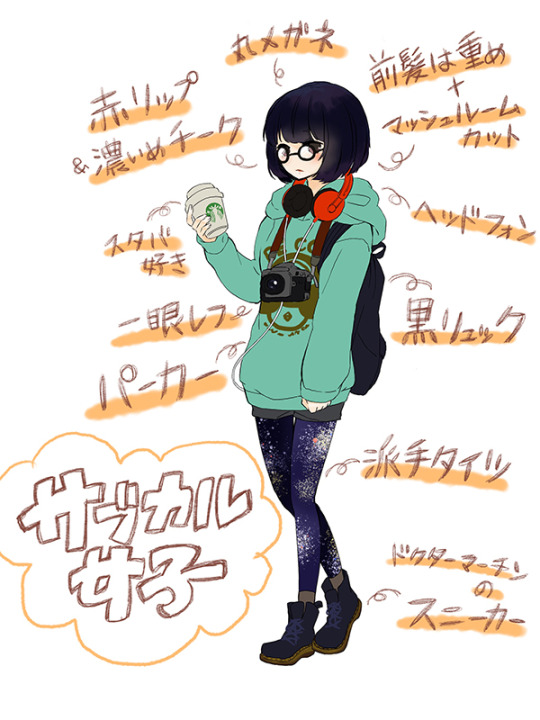
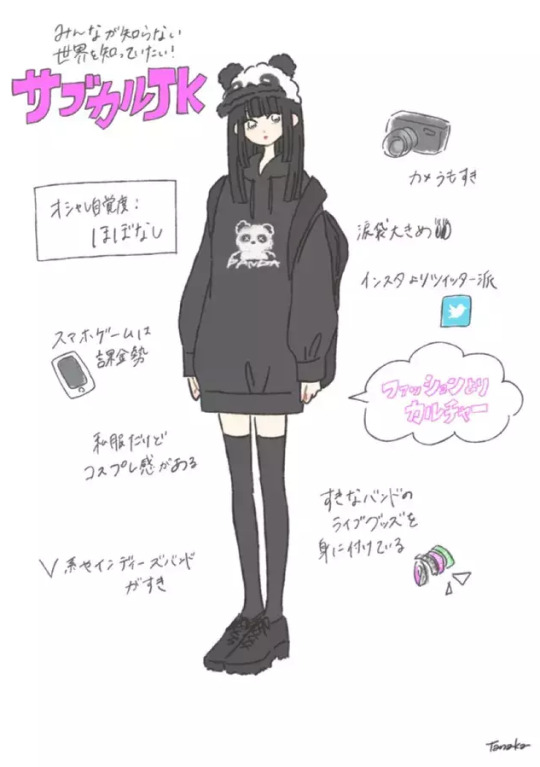
In conclusion:
Despite what online translators says, sabukaru ≠ subculture. Despite what some people claim, sabukaru isn’t a specific style or look. As said, it’s only a slang for someone into niche alternative fashion trends.
Thanks for reading!
#サブカル#サブカル系#天使界隈#水色#sabukaru#subcul#tenshi kaiwai#mizuiro#semi-related#japanese#stereotypes#japanese language#japanese lesson#term
423 notes
·
View notes
Text

#term#creatures#reproductive rights#reproductive health#reproductive justice#reproductive freedom#reproductive choice#reproduction#livestock#ausgov#politas#auspol#tasgov#taspol#australia#fuck neoliberals#neoliberal capitalism#anthony albanese#albanese government#fascism#oppression#repression#capitalism#statism#facts#fact#class war#abortthecourt#abortion#abortion is healthcare
7 notes
·
View notes
